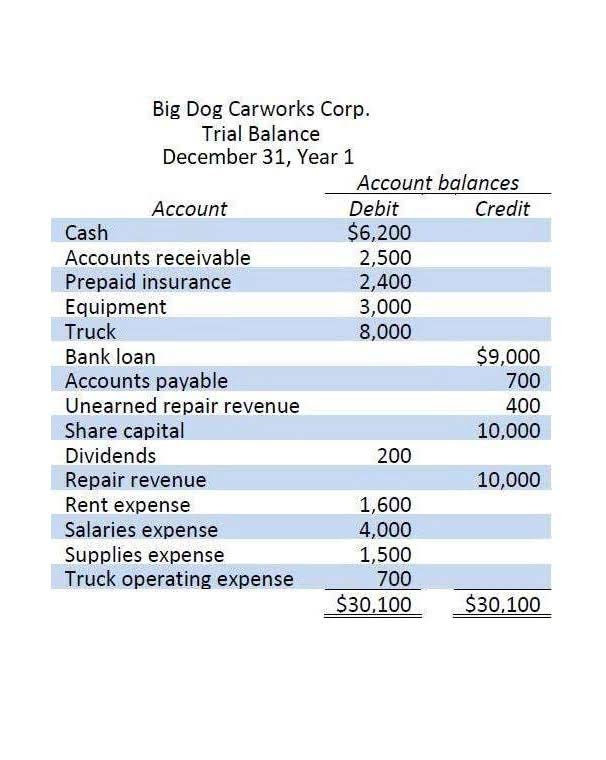Debits And Credits Cheat Sheet: Your Guide To Mastering The Basics
Yes, accounts payable is typically recorded as a credit entry because it represents a company’s liability to pay vendors for goods or services received. It increases with a credit entry when obligations are incurred and decreases with a debit entry when payments are made, reducing the liability on the balance sheet. Journal entry is the formal recording of financial transactions in the accounting system. Each journal entry consists of at least one debit and one credit, with the total debits equaling the total credits. Journal entries are used to update the general ledger accounts and form the foundation for financial statements. Whether businesses purchase raw materials, office supplies, or professional services, these transactions are typically done on credit.
An income statement account for expense items that are too insignificant to have their own separate general ledger accounts. A temporary account to which the income statement accounts are closed. This account is then closed to the owner’s capital account or a corporation’s retained earnings account. This and other summary accounts can be thought of as a clearing account. A temporary account used in the periodic inventory system to record the purchases of merchandise for resale.
Step-by-Step Walkthrough: Recording Transactions
When I purchase something, it means exchanging resources for an asset. In this case, the asset is supplies, which a company owns and uses for operations. Since supplies are an asset, buying them increases the asset’s balance. To reflect this increase, I debit the account because assets have a normal debit balance.
In financial accounting, there are rules set in place that ensure that every financial transaction has equal amounts of debits and credits. One of the main principles behind this equality is related to the relationship between the accounting equation and debit and credit rules. This means that asset accounts with a positive balance are always reported on the left side of a T-Account. Debits are primarily used to increase expense accounts, reflecting the cost being used or paid. For example, if you pay $500 cash for your monthly rent, you’d debit rent expense (the expense increases) by $500 and credit cash (the asset decreases) by $500. The next month, Sal makes a payment of $100 toward the loan, $80 of which goes toward the loan principal and $20 toward interest.
Automate Your Debit and Credit Accounting with Vencru
Debit entries reflect an increase in assets or a decrease in liabilities, while credit entries reflect a decrease in assets or an increase in liabilities. The equipment is an asset, so you must debit $15,000 to your Fixed Asset account to show an increase. Purchasing the equipment also means you increase your liabilities. To record the increase in your books, credit your Accounts Payable account $15,000.
This depends on the area of the balance sheet you’re working from. For example, debit increases the balance of the asset side of the balance sheet. Use the cheat sheet in this article to get to grips with how credits and debits affect your accounts. As a general rule, if a debit increases 1 type of account, a credit will decrease it. Perhaps you need help balancing your credits and debits on your income statement. When you complete a transaction with one of these cards, you make a payment from your bank account.
Debits and Credits in a Journal Entry
Debits and credits are a critical part of double-entry bookkeeping. They are entries in a business’s general ledger recording all the money that flows into and out of your business, or that flows between your business’s different accounts. This article explains the meaning of debit, how it works, its role in bookkeeping, the difference between debits and credits, and its impact on financial transactions.
- This increase in liability is recorded by crediting the creditor account.
- For instance, just as some people are naturally right- or left-handed, each type of account has a “hand” it favors—either debit or credit.
- Our solution has the ability to prepare and post journal entries, which will be automatically posted into the ERP, automating 70% of your account reconciliation process.
- Finance and accounting experts with real-world experience write every articles.
In the above example, an increase in an asset of furniture is debited by $100. This has been paid for by cash which leads to a reduction in another asset class and is recorded by crediting the cash account. As a side note, remember to hang on to all invoices and receipts when it comes to company billing and company purchases.
In accounting, the rule is that debits and credits must be equal. To get a better understanding of how this record-keeping is done, let’s look at a few debit and credit business examples. As you can see, Bob’s liabilities account is credited (increased) and his vehicles account is debited (increased). As you can see, Bob’s cash is credited (decreased) and his vehicles account is debited (increased).
To use that same example from above, if you received that $5,000 loan, you would record a credit of $5,000 in your liabilities account. If there’s one piece of accounting jargon that trips people up the most, it’s «debits and credits.» The total of your debit entries should always equal the total of your credit entries on a trial balance. Your goal with credits and debits is to keep your various accounts in balance. For that reason, we’re going to simplify things by digging into what debits and credits are in accounting terms. While it might seem like debits and credits are reversed in banking, they are used the same way—at least from the bank’s perspective.
Debits and Credits in Different Account Types
This information will be essential as you begin navigating the business world. Are you interested in learning more about debits and credits? Check out our blog post on why debits and credits are essential in accounting.
- To keep a company’s financial data organized, accountants developed a system that sorts transactions into records called accounts.
- Accounts with balances that are the opposite of the normal balance are called contra accounts hence contra revenue accounts will have debit balances.
- Revenue and Expense accounts appear on your income statement.
- In this blog, we will answer this question in detail by covering the basics of AP, how debits and credits work, and how AP is recorded, with clear examples.
I used deductive reasoning to break down only the most important key terms in the transaction. And if you look at the accounting equation, you’ll see the T-account hiding in plain sight. Sign up to receive more well-researched accounting articles and topics in your inbox, personalized for you.
For example, when a company borrows $1,000 from a bank, the transaction will affect the company’s Cash account and the company’s Notes Payable account. When the company repays the bank loan, the Cash account and the Notes Payable account are also involved. By understanding the cash flow statement, businesses can make informed decisions about best use of their cash resources. For example, you debit the purchase of a new computer by entering it on the left side of your asset account. After you make an invoice, the corresponding debit and credit entries are added by the system to Accounts Receivable, Sales, Cash, and so on. Every business has a specific chart of accounts for their General Ledger, depending on the types of financial activities they perform.
This includes costs incurred for promoting products or services to potential customers. If the credits exceed the debits then the balance will be a credit balance. If the debits exceed the credits then the balance will be a debit balance.
A debit is an entry on the left side of a ledger, which indicates an increase in assets or a decrease in liabilities. A credit is an entry on the right side of a ledger, which indicates a decrease in assets or an increase in liabilities. In the debit and credit examples general ledger, debits and credits must always balance.
One of the most challenging aspects of accounting is analyzing transactions, which involves the careful process of determining the appropriate debits and credits. If you get this wrong, everything that follows will be wrong. However, I will teach you a way to effectively analyze transactions.
Think of these as individual buckets full of money representing each aspect of your company. The difference between debits and credits lies in how they affect your various business accounts. Sal records a credit entry to his Loans Payable account (a liability) for $3,000 and debits his Cash account for the same amount.










